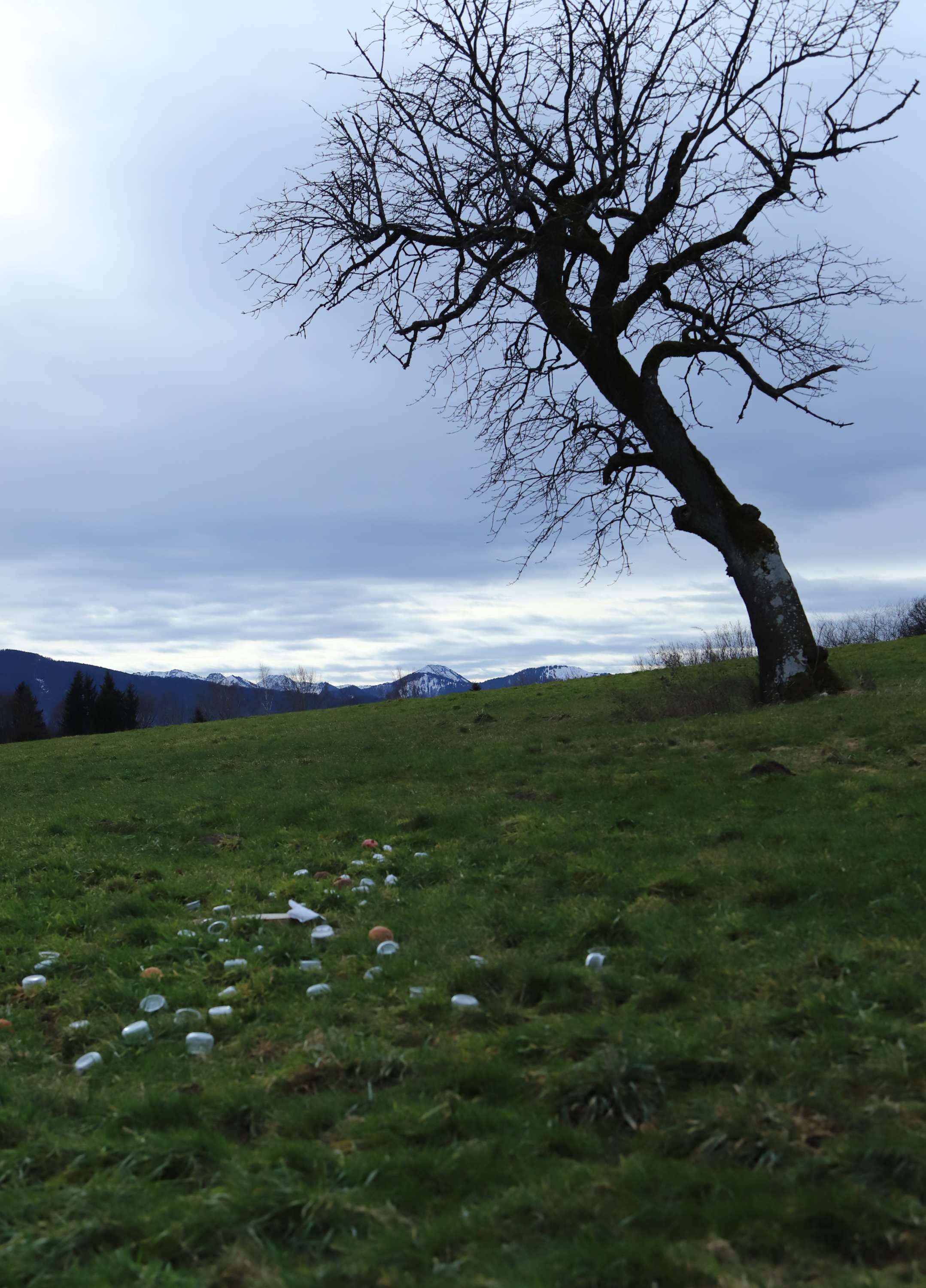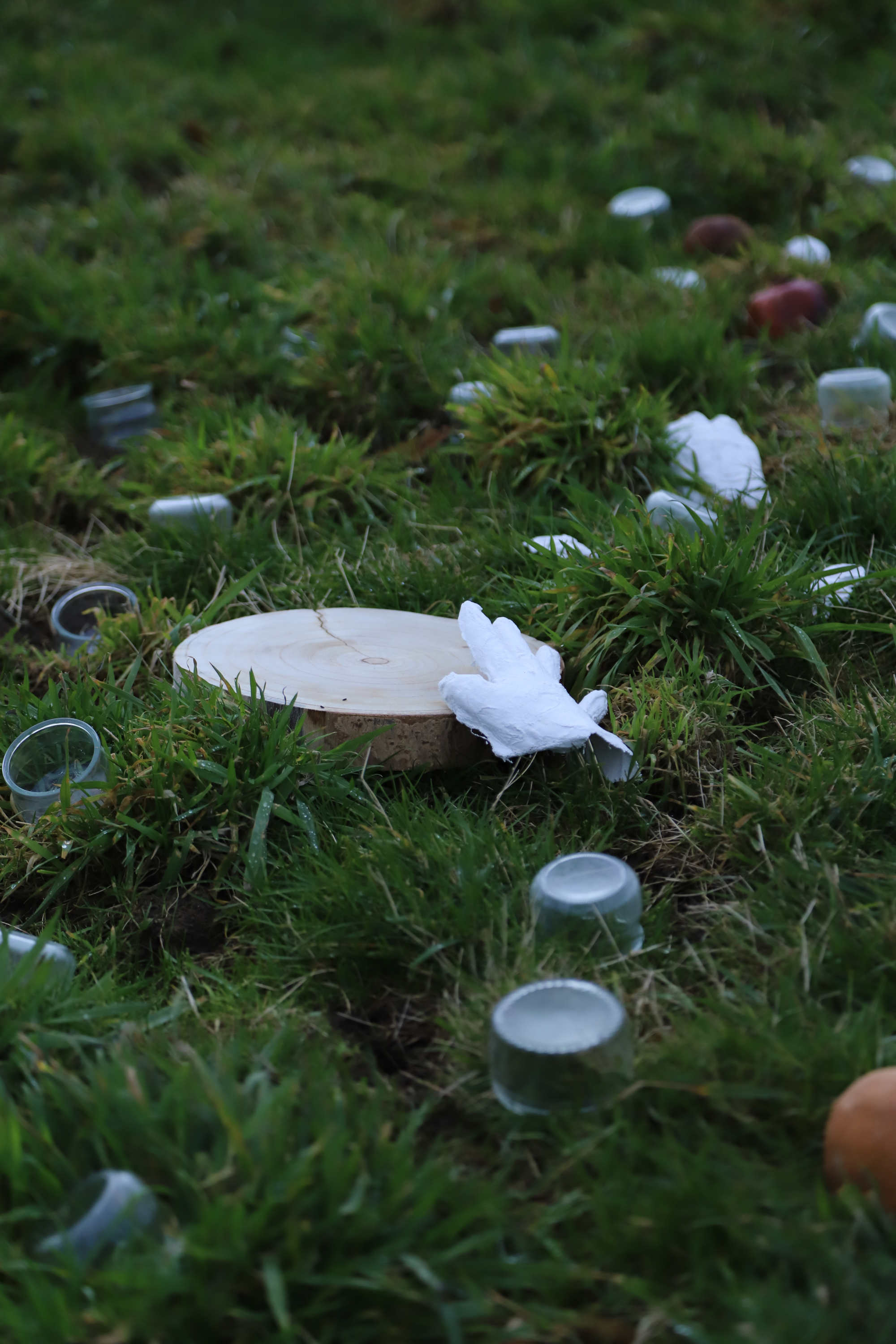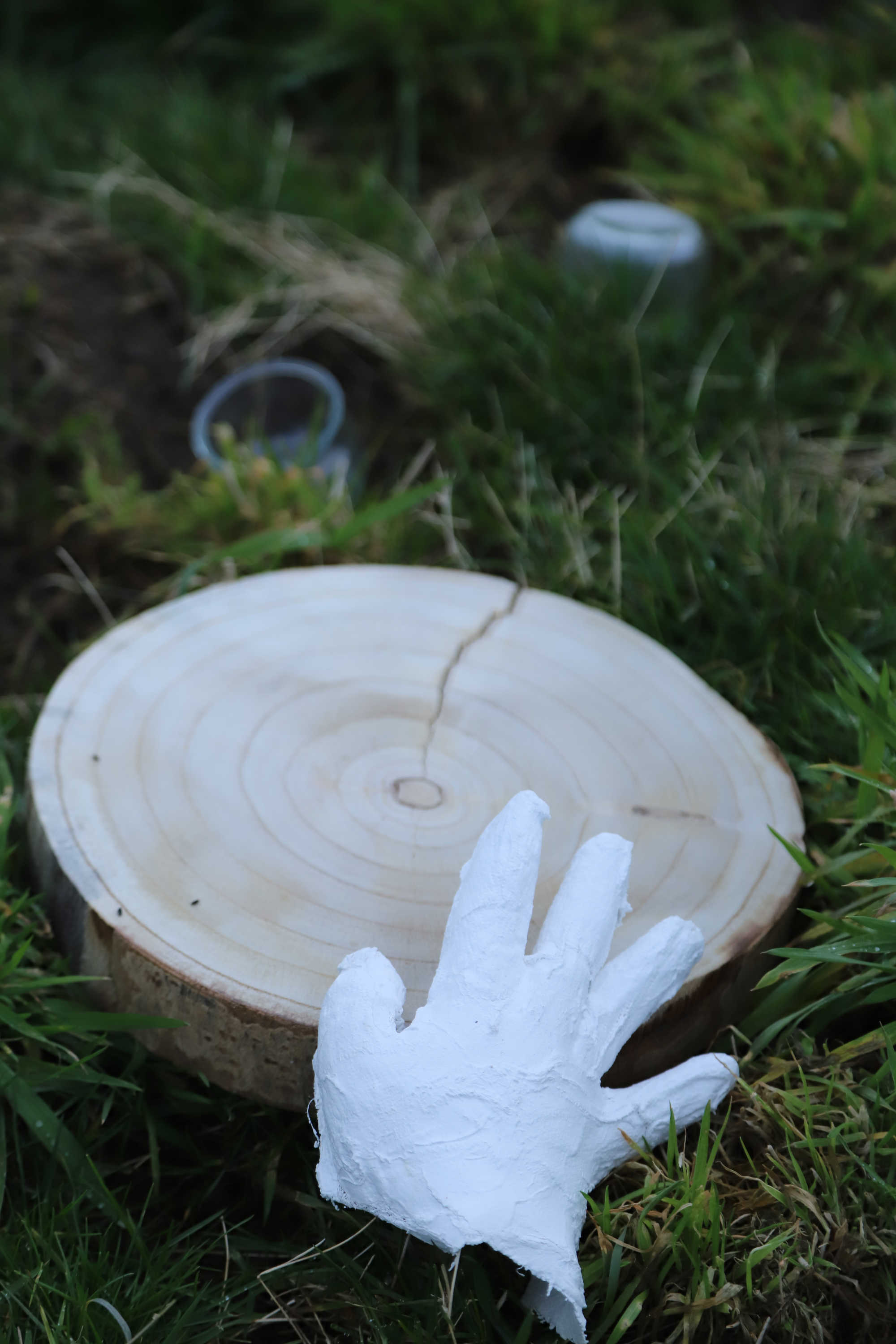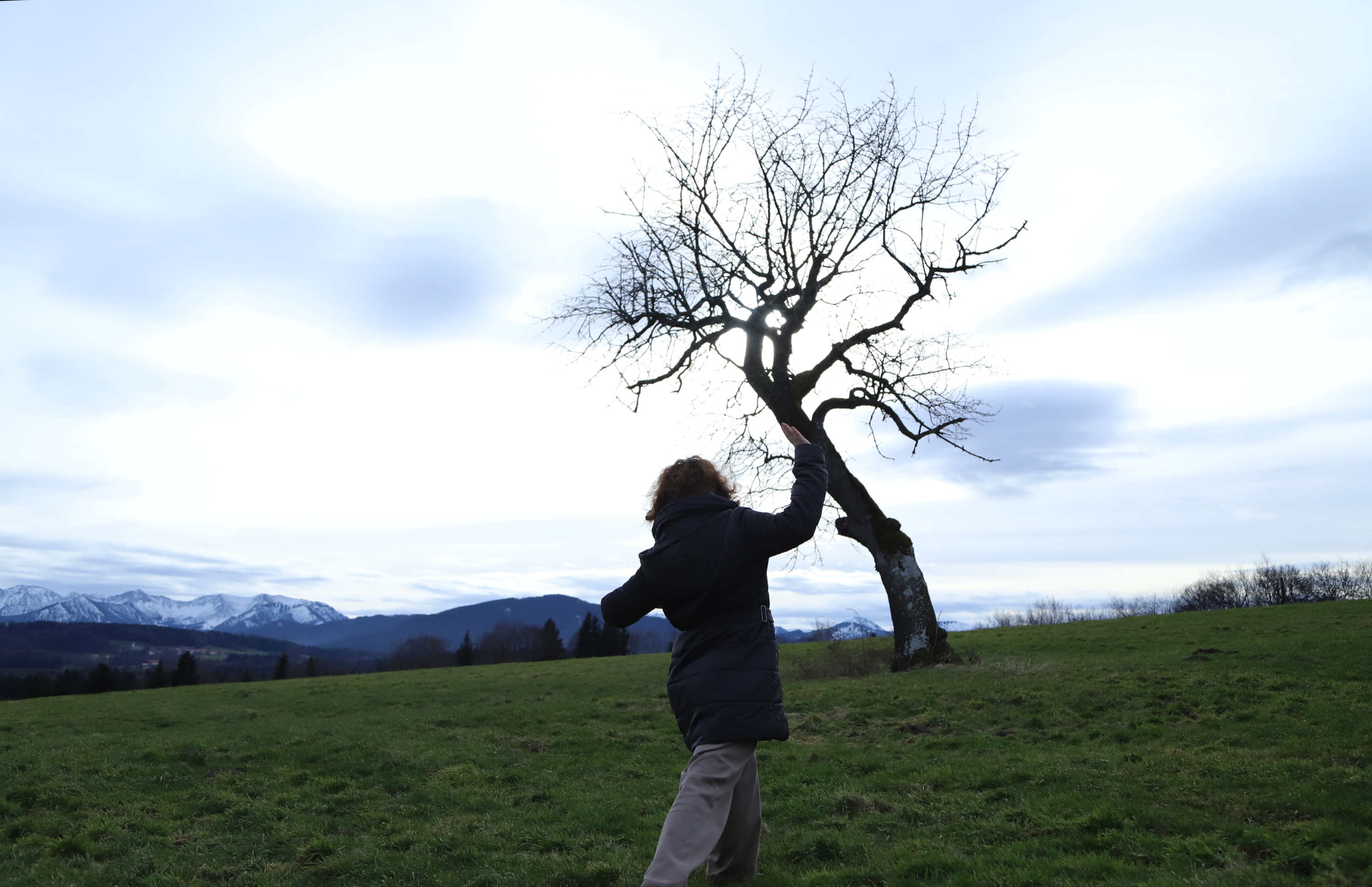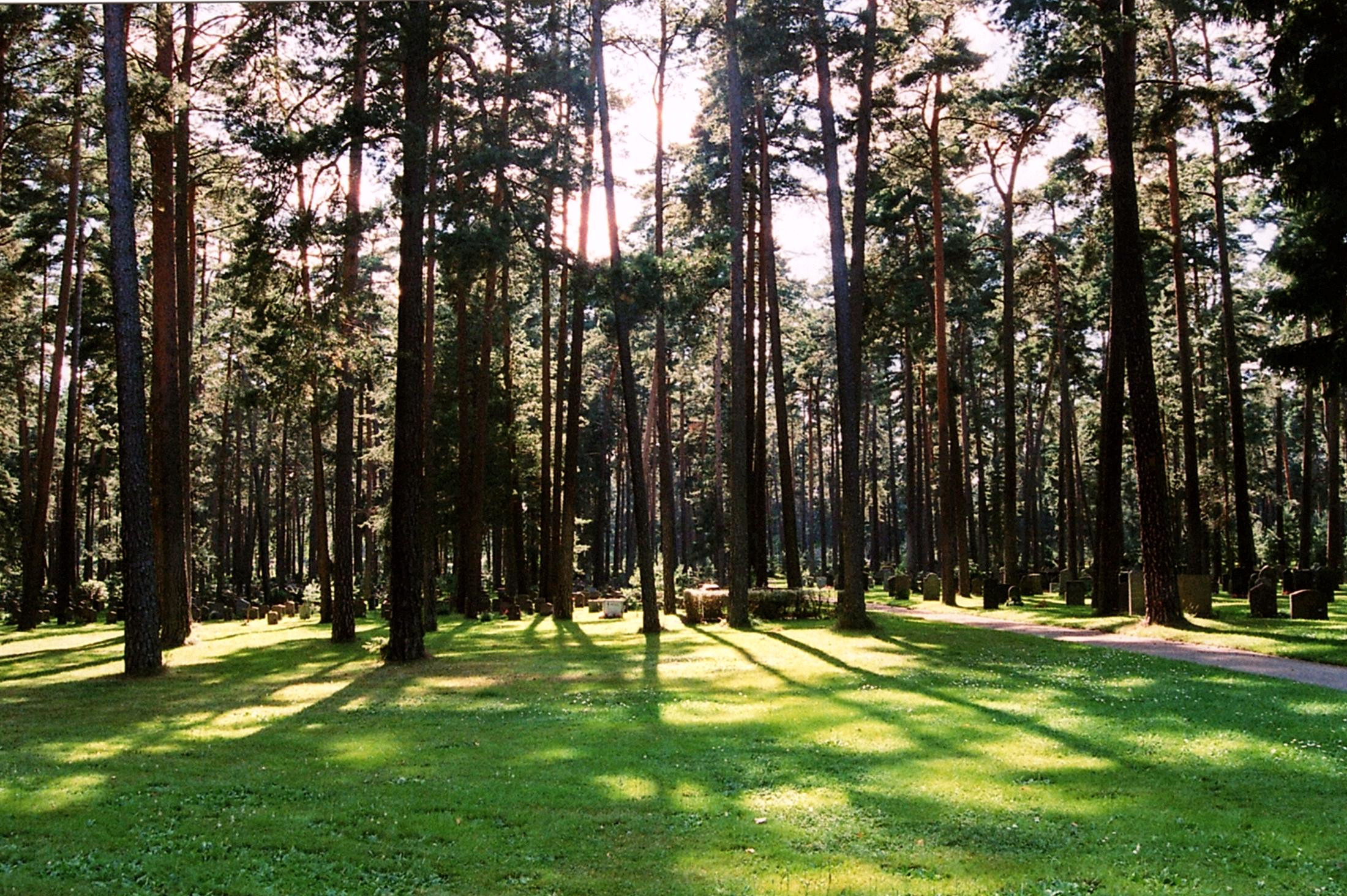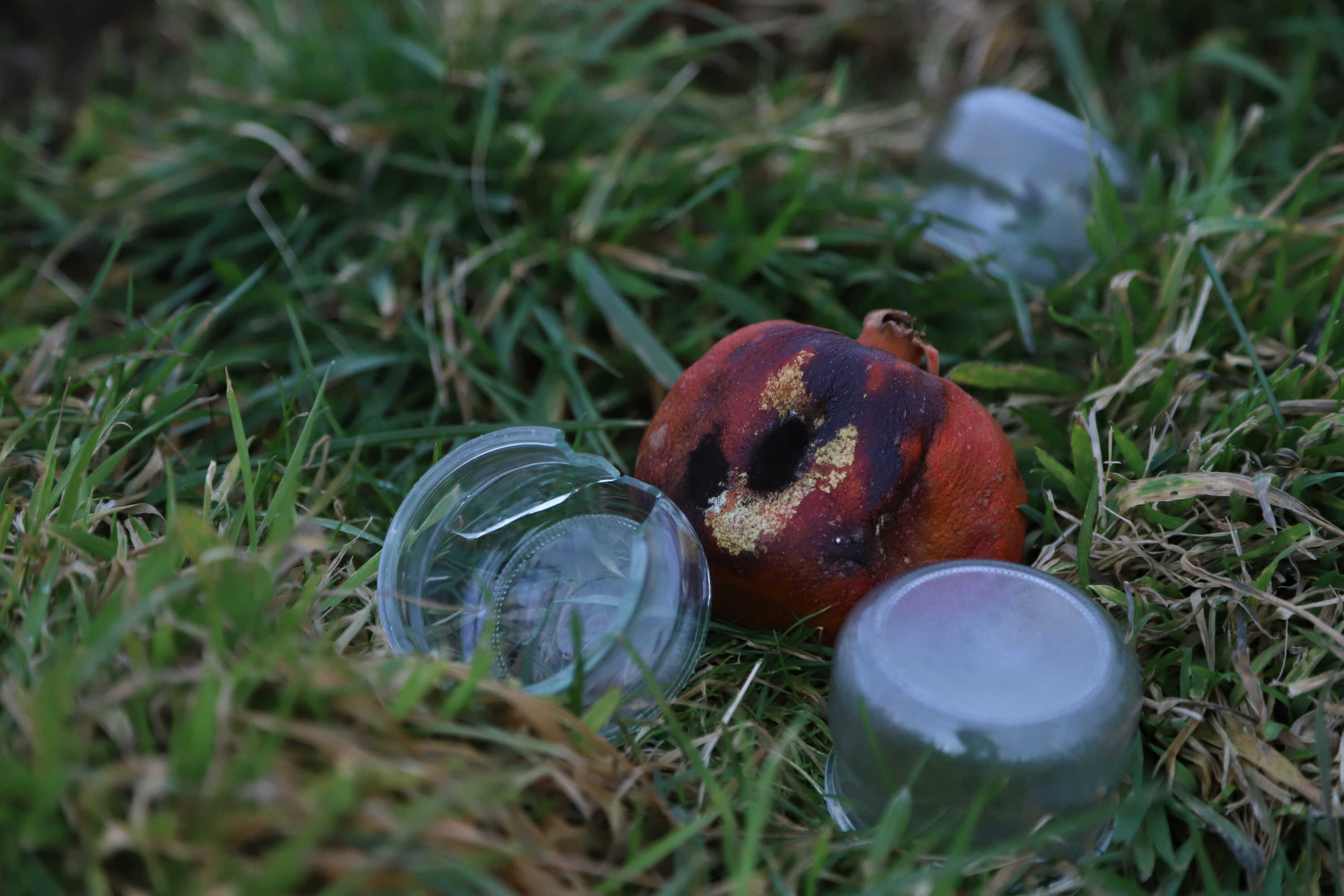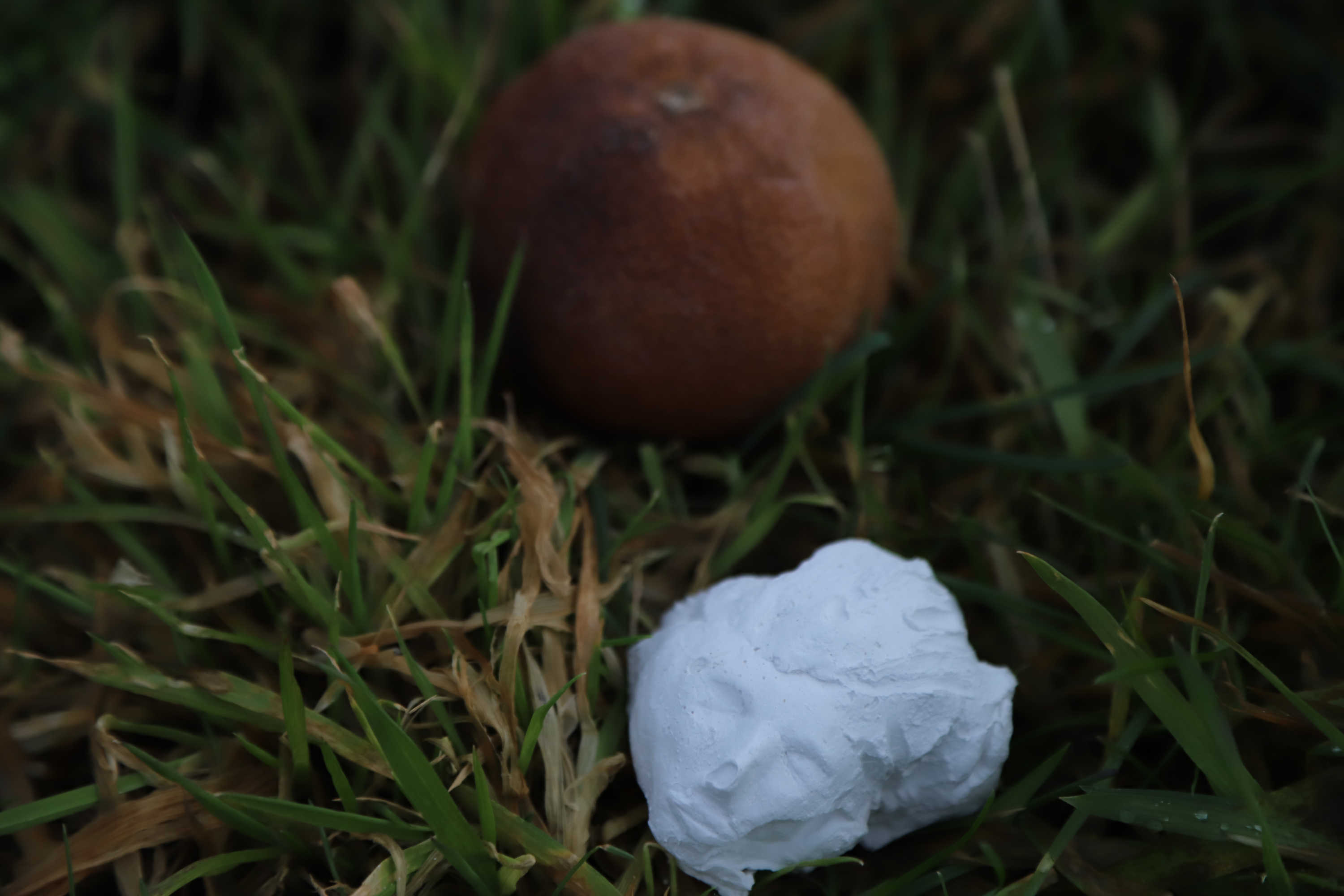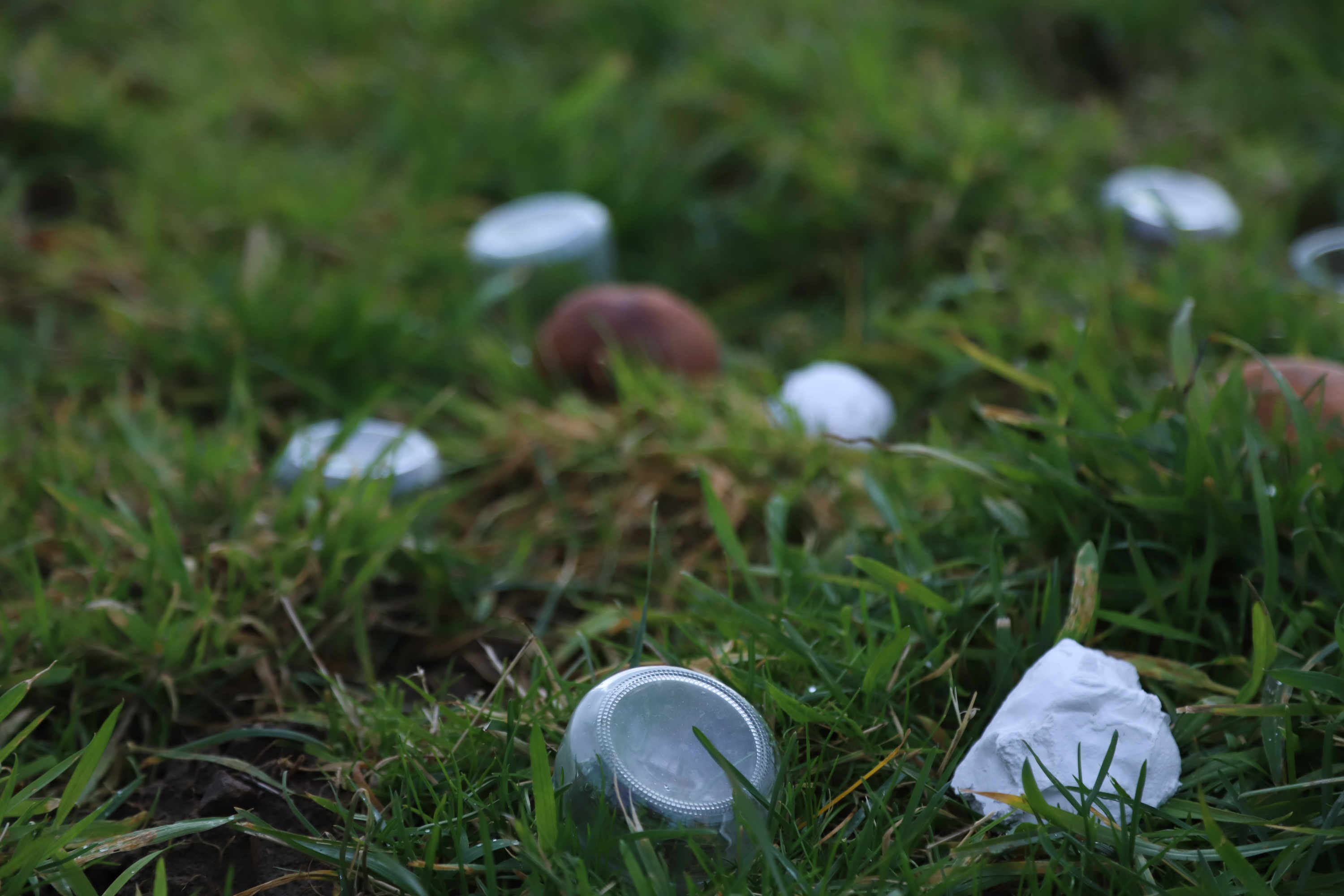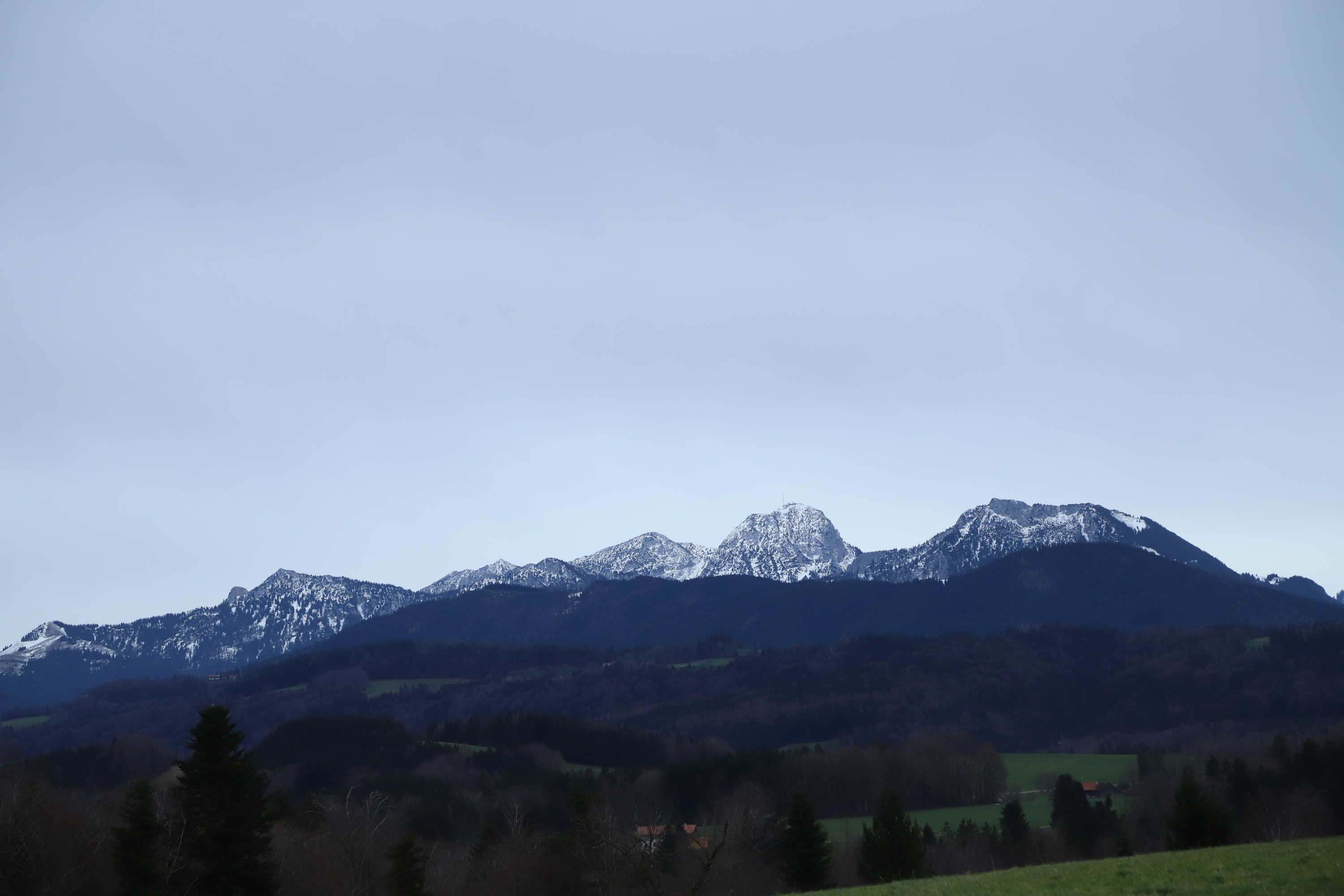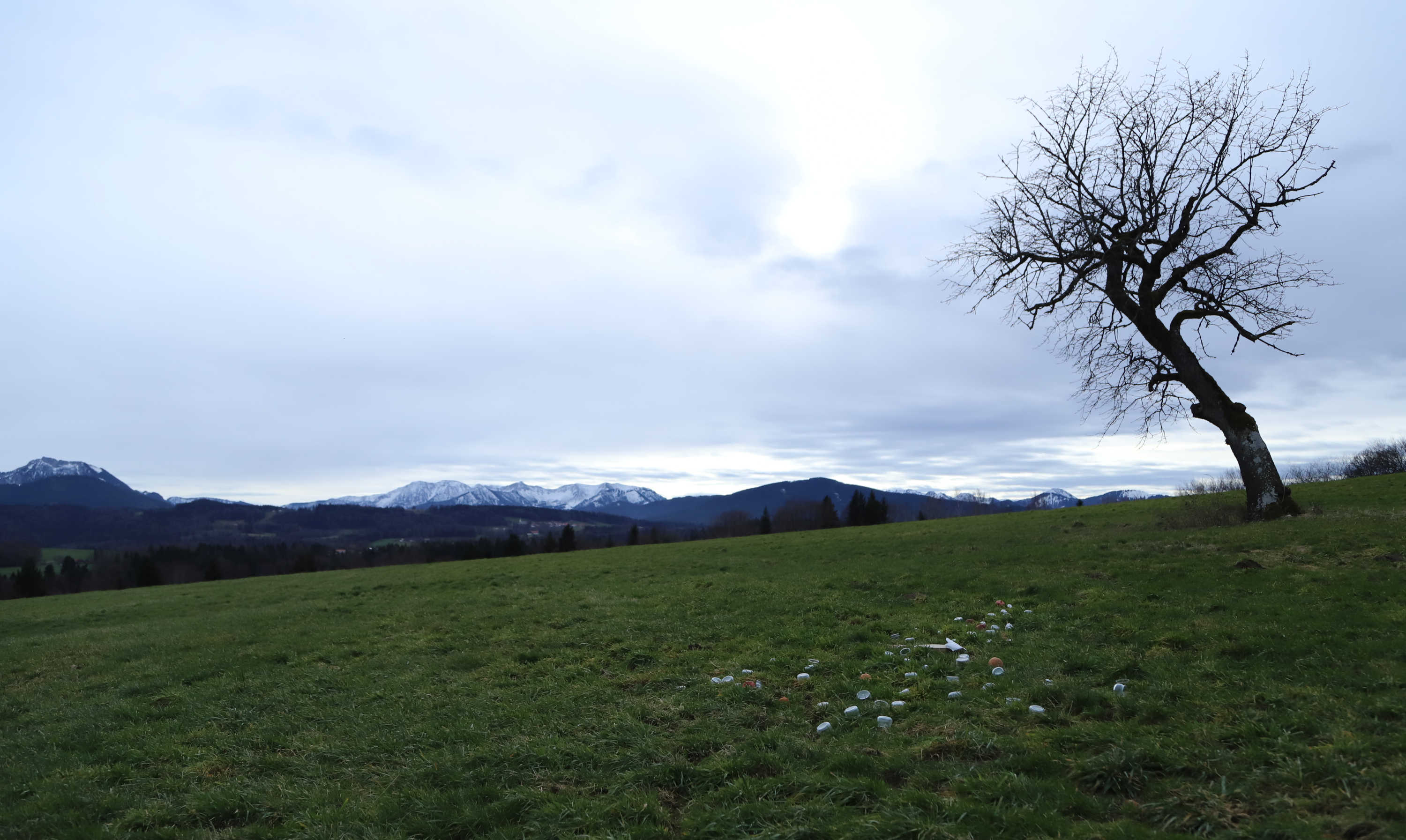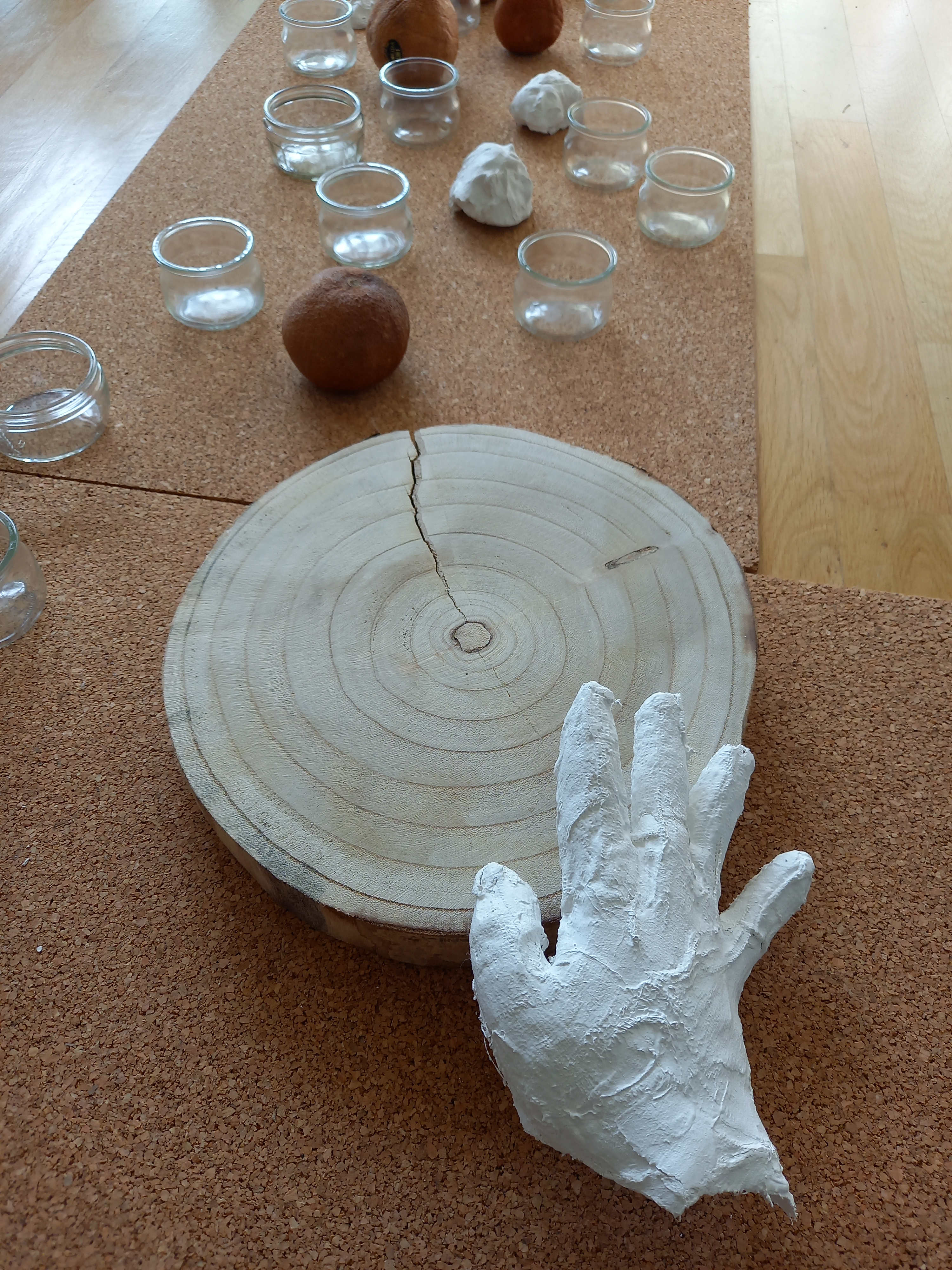This is a work about losses and encounters, about obstacles and challenges: it deals with personal growth and life and uses visual analogies to the digital silicon memories.
Memories become Memory, the Memory marks the personal Story, and the Story traces a life path that little by little turns into the History, revealing the Identity.
Materials:
- on the floor (minimum area 1,5 x 2 m): plaster, glass, wood, dried pomegranates, and dried grapefruits.
- on the wall: video mixing images of the installation set in the Inn Valley (Germany, Austria, Swiss) and old analogue pictures taken at the cemetery of Stockholm and in the surroundings of Oslo.
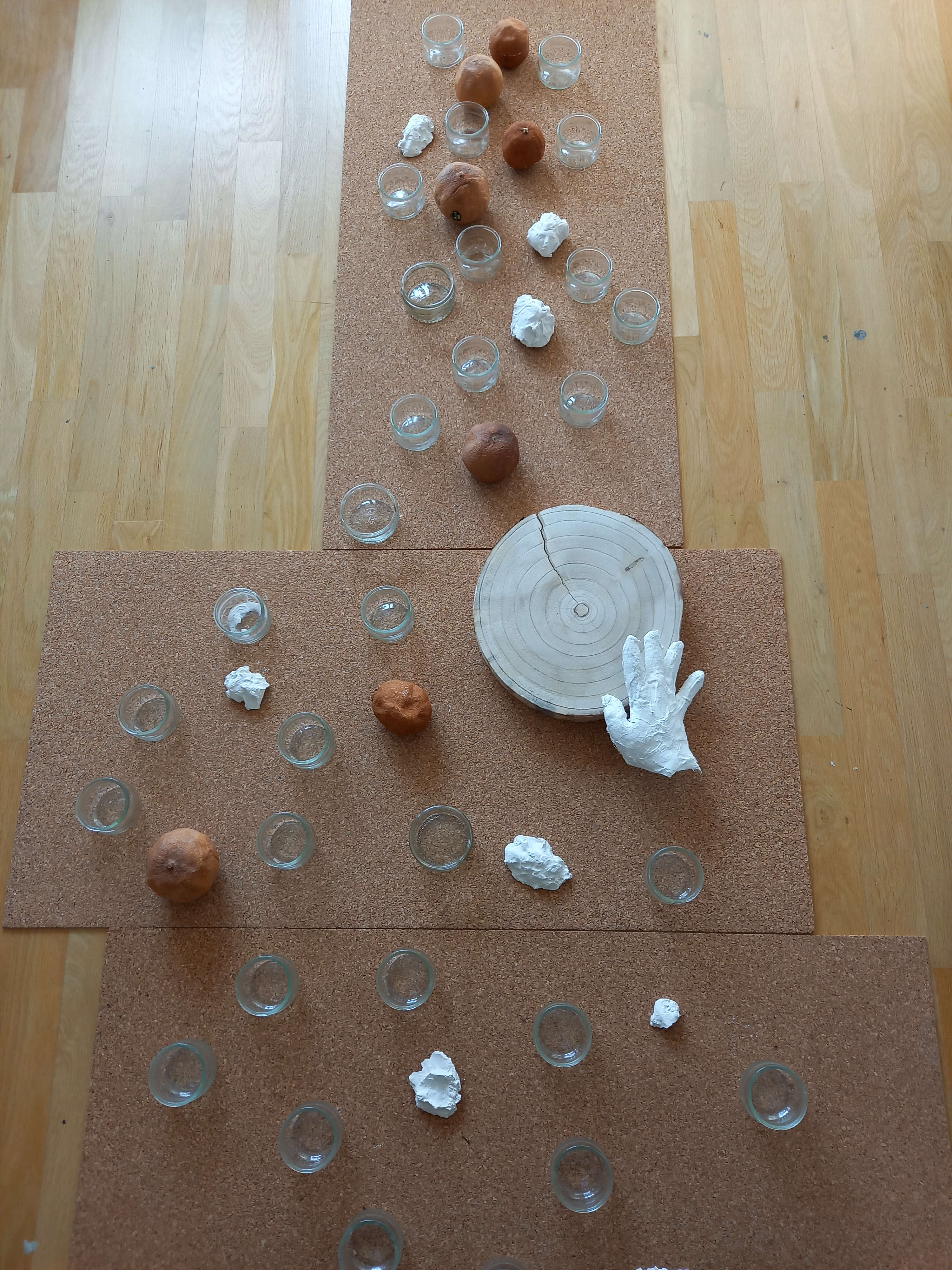
At a conceptual level it is a visualisation of how, from local chaos and fragmentation, order can originate on a long scale. This type of representation relates both to physical models of heat and electric charge propagation and to models of computer memories. Empty glass jars are at once affective emptiness and forgetfulness as well as bits of silicon yet to be written; dried fruit, on the other hand, corresponds to the harvest of one's labour and full bits stored. Finally, there are stones, like river pebbles, which, when looked at closely, reveal faces of people: the important encounters in our lives that, like milestones, have guided our path.
The installation is divided into two parts by the wooden disc: a more upstream part, characterised by many empty, quite scattered elements at a great distance from each other; a downstream part, with a greater density of full elements organised in an orderly, well-correlated flow.
The wooden disc, a section of trunk, serves physically and conceptually as a watershed.
The concentric rings of the trees are first and foremost a measure of their lifespan itself, the spacing of which bears memory of the journey and the various difficulties faced (e.g. drought years). A circular section of wood is expected to behave as an elastic, symmetrical element, just like a drum. Instead, we see that all it takes is a slight percussion by a hand of plaster, placed at the right point and at the right time, to generate resonance and reveal hidden problems, opening what appears to be a macroscopic crack.
In classical physics, the processes that generate the cracks and fractures are associated with the study of the elastic response of the system, its fragility and directionality.
|
|
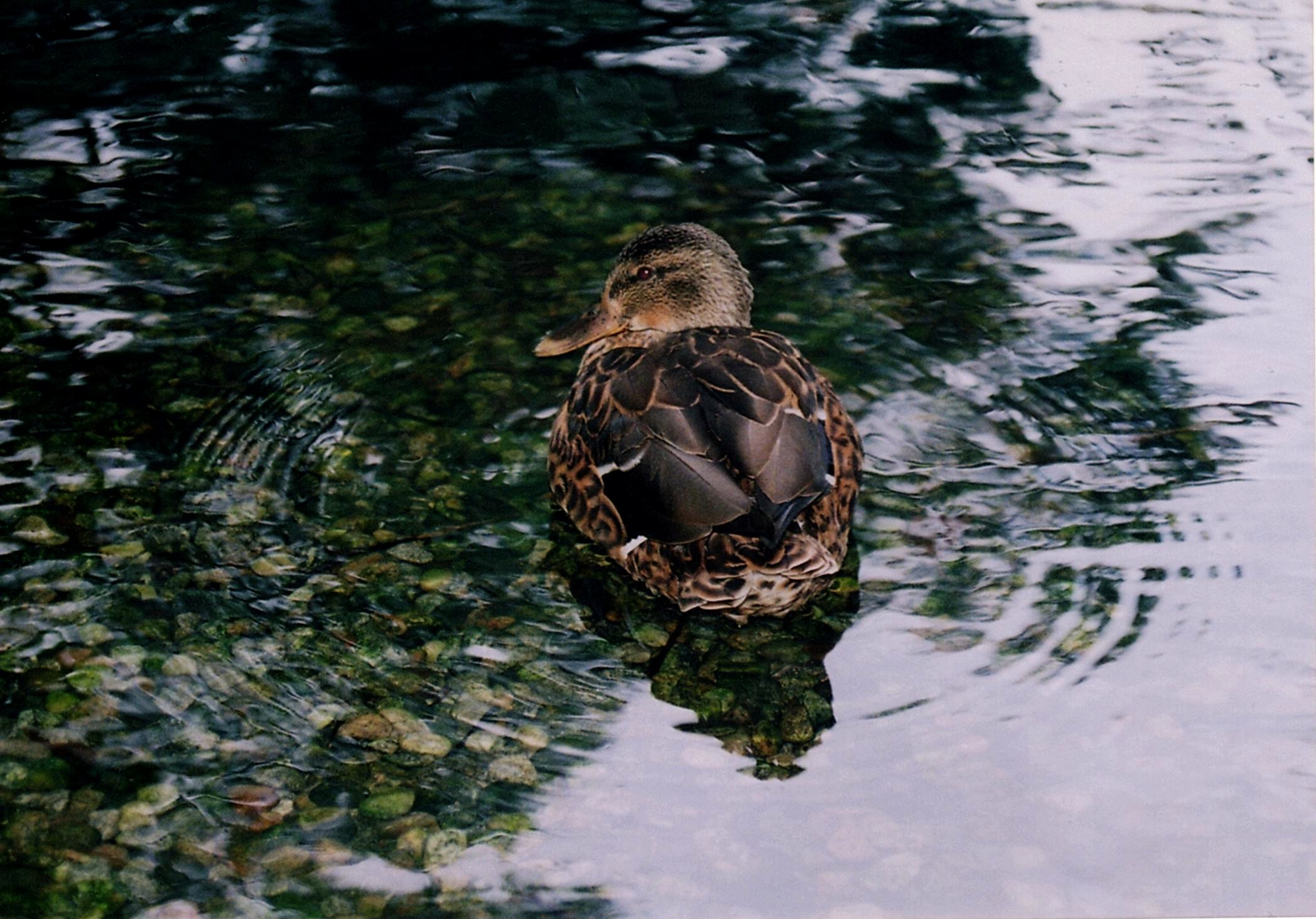 |
Such a physical concept, originally inspired by the life of human beings, can be returned here to the interpretation of the life of a human being: when in a chaotic situation we experience traumas or positive events that resonate with our experience, the formless experience can acquire meaning and help us define our identity. So, for example, collecting objects helps us to keep memories alive, to reconstruct the path from which we came and better understand where we are going (or could go).
